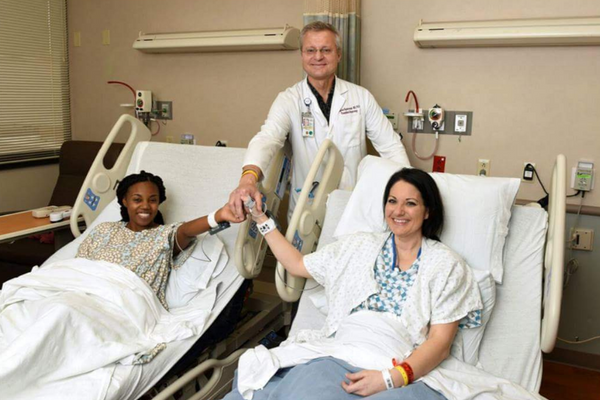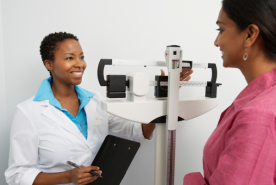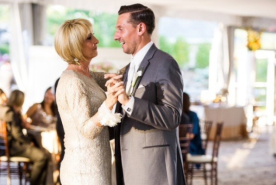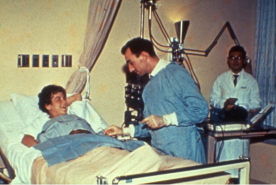November 23, 2022
When Stephenie Brown was in her early thirties in 2010, she got into a motorcycle crash that almost took her life. This traumatic incident made her rethink living far from friends and family. A few months later, she moved back home—a decision that would forever change her life.
Choosing to become a living kidney donor
Not long after her move, Stephenie met Chané, and the two quickly became inseparable.
Stephenie always knew that Chané had lupus nephritis. Lupus is an autoimmune disorder that causes the immune system to turn against the body. Lupus nephritis is a type of kidney disease caused by lupus. Chané's condition was stable, so it wasn't a large part of their friendship.
"I knew she had lupus nephritis, but she was feeling okay. Then, one day, she called me crying. She said to me, 'My kidney function is gone,'" Stephenie said. "I knew that if she didn't get a transplant, she'd need to start dialysis."
Chané's family immediately jumped into action, getting tested to become her kidney donor.
"Her mom got denied. Then her brother got denied because he has a history of high blood pressure," Stephenie said. "I didn't even think about it and offered her my kidney. She's my person and I wanted her to see her daughters graduate high school, go to college, and get married. She asked me to think about it."
But once Stephenie did, doubts kicked in—What if one of her daughters needed a kidney transplant in the future? What if something happened to her during the process?
"I went to church and asked if this was what I'm supposed to do," said Stephenie. "I prayed for healthy kidneys and for my children. When I got up, I knew the answer. I wiped my face off, and called her back saying that I was 100% certain."
Learn more about making the decision to donate.
An almost perfect match
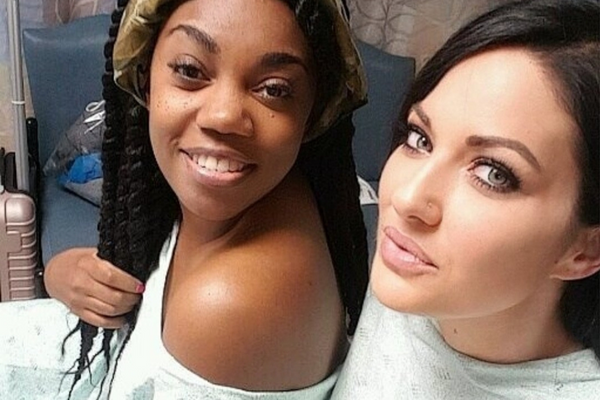
Stephenie began the living kidney donor evaluation process, which included taking an online questionnaire and speaking with a psychologist, a social worker, and the transplant team.
"The extensive medical screening was a breeze. By the end of October, I found out I was an almost perfect match," Stephenie said. "We had the surgery on December 23rd, 2016, and then spent Christmas side by side in the hospital."
Their transplant was a success and marked the 200th living donation their hospital performed that year.
But the chance of Chané’s lupus nephritis coming back was always on their minds. "What are the chances that lupus would attack the new kidney? It was one of my biggest questions." Stephenie said. "There was no way to know.”
Want to learn more about the living kidney donation process? Here's all the information you need to start your kidney donation journey.
Sharing their story and spreading kidney donation awareness
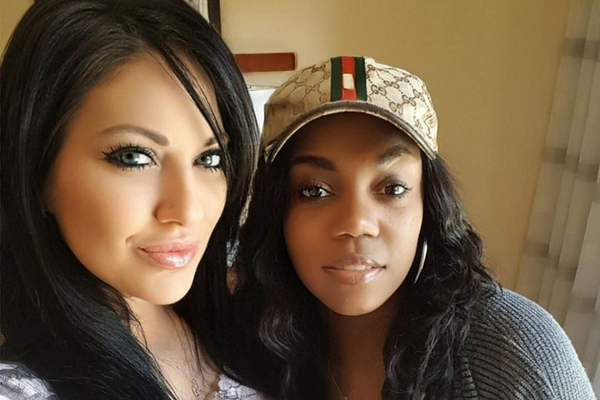
Chané's new kidney did well for over two years. Then lupus nephritis came back with a vengeance. Doctors did everything they could to maintain Chané’s kidney function but could not save it. She went into complete kidney failure in 2019 and started home hemodialysis.
Now, Chané is focused on maintaining her health for as long as possible and spending time with loved ones, while Stephenie takes comfort in sharing their story and spreading kidney disease awareness.
"A lot of people are scared to donate or even consider the donation because of what could happen. I'm living proof that you can donate your kidney and have a healthy life. My kidney function, eGFR, and creatinine levels are perfect," Stephenie said. "There are a few things to be more mindful of, but it can be done."
Despite the sad ending, Stephenie has no regrets about donating her kidney because she was able to give Chané two beautiful years off dialysis. She plans to keep fighting for people with kidney disease and raising awareness about living donation.
"I need her to know that I love her, I have her, and I will forever advocate for her and living donors," said Stephenie. "There are so many thousands of people that go on the transplant list who pass away before they can get a kidney. We can save so many lives if we educate people about living donation.”
One way to help increase living kidney donation is by increasing donors' medical and financial support. You can help make this happen! Ask Congress to support living donor protections.
